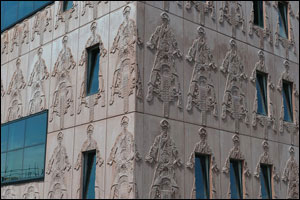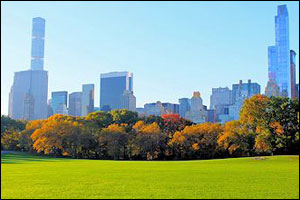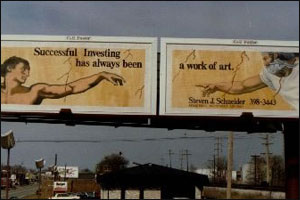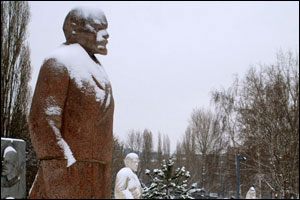Sessions
1A. What Iconic Narratives Can Teach Us
This session’s focus is on iconic narratives and narrative structures. How do iconic narratives represent a certain period or historical episode? What makes these narratives so appealing that they are being adapted and retold over time? What constitutes these stories as iconic? How do cultural institutions, in particular museums, make use of iconic narratives and how do they contribute to their ‘iconic’ status? What do these narratives learn us about the past?
Speakers:
- Pieter de Bruijn (Open University) – ‘Connecting Histories: Iconic Narrative Structures in Museum Exhibitions’
- Kirsten E. Kumpf Baele (The University of Iowa) – ‘Turning over a New Leaf: Pedagogical Opportunities of a Cultural Icon, Anne Frank’s Chestnut Tree’
- Jilt Jorritsma (Koninklijk Nederlands Historisch Gezelschap, KNHG) – ‘The Faustian Legacy of Das Abendland: A Cultural Model for Dealing with Unintended Consequences’
- Herman Simissen (Open University) – ‘Theodor Lessing and the Arbitrary Nature of Cultural Icons’

1B. Iconic Persons as Cultural Models
This session places the study of iconic persons within the broader framework of cultural modeling: how do iconic persons function as cultural role models? What do they represent (a specific cultural type, a set of cultural norms and values etc.)? And for whom do they function as a model? Due to what cultural or historical factors does the appreciation, evaluation and/or functioning of a specific icon change? And how can the shifting evaluation of the icon be understood in relation to broader social-historical developments?
Speakers:
- Nina Geerdink (University Utrecht) – ‘Vondel as an Iconic Model for Honourable Authorship’
- Jeroen Vanheste (Open University) – ‘T.S. Eliot: the Rise and Fall of a Cultural Icon’
- Erica van Boven (Open University) – ‘The Cover of Ik Jan Cremer’
- Gaston Franssen (University of Amsterdam) – ‘Representing Science and Schizophrenia: John Nash as Icon of the Mad Genius’
2A. Spatial Dimensions of the Icon
Icons are often linked to representations of specific persons (see session 1A) or objects (see session 2B). Yet, concrete places, sites or buildings are regularly coined ‘iconic’ as well. They can define the image of a city or even a country, they are used to shape group identity or function as privileged points of reference within the collective remembrance of specific historical events. How can we study the distinct spatial dimension of the icon? What (or who) makes a place or site ‘iconic’? What determines the recognizability of an iconic place? To what extent is the iconicity of a city or public site influenced by procedures of cultural reproduction or branding?
Speakers:
- Frank Inklaar (Open University) – ‘The Making of an Icon: Hanzestad Zwolle’
- Paul van den Akker (Open University) – ‘The Renaissance at a Glance. The Panoramic view of Florence’
- Rudi van Etteger & Kevin Raaphorst (Wageningen University) – ‘Central Park as Icon’
- Connell Vaughan (Dublin School of Creative Arts) – ‘The Enlisted Icon’

2B. Icons, Objects & Materiality
This session’s focus is on the distinct material aspect of the icon: how is an object understood and used as attribute of a specific icon, sometimes gaining iconic status itself? How does the adaptation of specific icons function in processes of identity formation (e.g. national identity, gender identity)? How do objects make the icon tangible? What institutions contribute to the iconization of specific (national) iconic objects or representations of these objects?
Speakers:
- Lieke van Deinsen & Jan de Hond (Rijksmuseum) – ‘The Sword and the Album. Johan van Oldebarnevelt (1547-1619) and his Tragic Death as Cultural Icons in the Early Modern Dutch Republic’
- Meghen Jones (Alfred University)– ‘Tea Bowls as National Treasures and Cultural Icons in 1950’s Japan’
- Breanne Robertson (Marine Corps University) – ‘Uncommon Valor as a Common Virtue: The Iwo Jima Flag Raising as Cultural Model’
- Noa Roei (University of Amsterdam) – 'Flag-Art and Modern Idolatry: on the Work of Ivan Grubanov'
3A. Traveling Icons: Comparative Approaches
The reception or changing evaluation of specific icons is an important topic within the study of iconic representations. This topic can be explored from a historical point of view, as well as from a comparative perspective. This session explores the comparative perspective by focusing on the way specific icons are interpreted and re-evaluated within different (national)cultural communities. How does the icon function within diverse cultural contexts? What are the indicators of a changing evaluation and reception through time? What is to be gained from a comparative approach and what are the problems or pitfalls?
Speakers:
- Jan Oosterholt (Open University) – ‘The Iconicity of Lord Byron in the 19th Century Netherlands and Europe’
- Janneke van de Stadt (Williams College) – ‘Out from under Carrol’s Pinafore: Alice’s Adventures in Soviet Russia’
- Katherin Mann (Texas Tech University) – ‘The Irish Bridget and The American Gibson Girl’
- Rui Lopes (NOVA University of Lisbon) – ‘Lisbon as an Iconic Setting of Romantic Intrigue’
- Elisabeth Den Hartog (Open University) – ‘Plato’s Cave: an Icon of Lasting Appeal’

3B. Icons, Popular Culture & Mediality
Not only the re-writing and adaptation by different groups, communities and generations, also the reproduction of an iconic representation within different (popular) media contributes to a large extend to its ‘iconic’ status. This makes the focus on processes of adaptation (the creative transfer from one medium to another), and processes of appropriation (by both artists and commercial institutions) highly relevant within the study of the iconic. How is an icon shaped or even ‘made’ by popular culture and/or mass media? How does reproduction within the popular sphere create room for parody and satire? How does this medial or popular appearance of the icon shape our collective (cultural) memory?
Speakers:
- Camille Rouquet (Paris Diderot University) – ‘Photojournalistic icons: models for reading wars and interpreting public opinion’
- Yvonne Delhey (Radboud University) – ‘Hitler Goes Pop. Reflections on the interaction between media representation and cultural memory’
- Eddo Evink (Open University) – ‘Che che che! The Icon in the Age of Digital Reproduction’
- Laura Rorato (University of Hull) – ‘Caravaggio a Pop(ular) Icon?’
4A. Re-writing the Icon: Political Dimensions of the Icon
This session addresses the political dimensions of the icon: how do iconic representations function in political contexts? How are they used and applied to frame and interpret political developments? How are they used to articulate political positions? Special attention is paid to the process of re-writing: how is an icon attributed with new meaning(s) to remember and deal with (traumatic) historical events or episodes? How does the icon function within the public debate, for example in relation to the collective remembrance of historical events? Does the icon secure existing images, thus reducing historical memory, or does it keep collective memory alive by offering room for re-interpretation?
Speakers:
- Catherine Makhumula (University of Malawi) – ‘Can a Cultural Icon Fall? #Rhodesmustfall and the Rewriting of Cultural Meaning’
- Veronique Bragard (UC Louvain) – ‘Decolonizing Belgium: Belgo-congolese Creative Revisions of Iconic Monuments’
- Maria Brock (Stockholm University) – ‘Lenin as Cultural Icon’
- Carla Zoethout (Open University) – The Fall of the Berlin Wall: from Communism to Liberalism to Illiberal Democracy’

4B. Analyzing Visual Icons: In Search of a Definition
This session reflects explicitly on the cultural analysis of the visual icon as a cultural model. Additionally, it offers room for attempts to define the concept of the ‘icon’. Can we distinguish certain characteristics of the icon by comparing different visual representations? What are the factors that determine whether or not a representation can function as an icon? How is the concept of the ‘icon’ understood and used in different professional disciplines that focus on understanding the visual, such as art history and the world of design?
Speakers:
- Frauke Laarmann (Open University) – ‘The Recognizability of the Visual Icon’
- Holly Crawford (AC Institute NYC) – ‘Mass Media Mouse and Artists: The Making and Appropriation of an Iconic Image’
- Adrienne Galosi (University of Pécs Hungary) – ‘Iconic Idols’
- Timea Andrea Lelik (Leiden University) – ‘Portraying the Icon: Unmasking the Image of the Cultural Model in the Work of Marlene Dumas’
